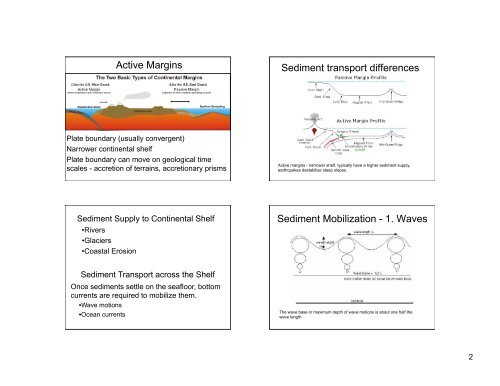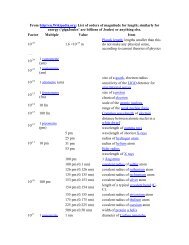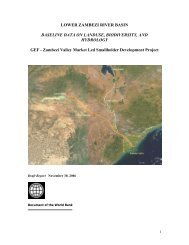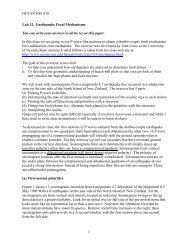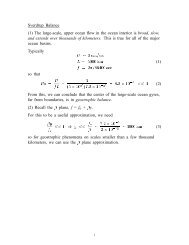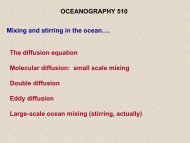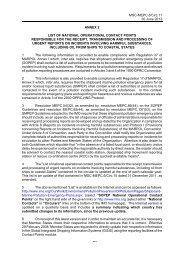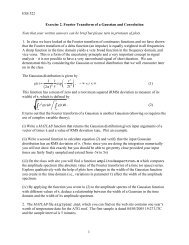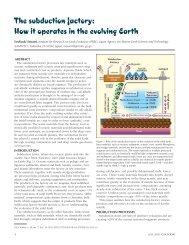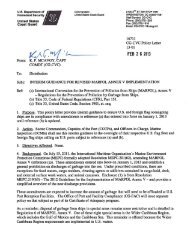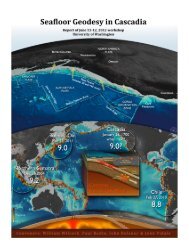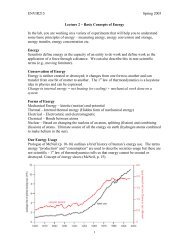16. Sediment Transport Across the Continental Shelf and Lead-210 ...
16. Sediment Transport Across the Continental Shelf and Lead-210 ...
16. Sediment Transport Across the Continental Shelf and Lead-210 ...
You also want an ePaper? Increase the reach of your titles
YUMPU automatically turns print PDFs into web optimized ePapers that Google loves.
Active Margins<br />
<strong>Sediment</strong> transport differences<br />
Plate boundary (usually convergent)<br />
Narrower continental shelf<br />
Plate boundary can move on geological time<br />
scales - accretion of terrains, accretionary prisms<br />
Active margins - narrower shelf, typically have a higher sediment supply,<br />
earthquakes destabilize steep slopes.<br />
<strong>Sediment</strong> Supply to <strong>Continental</strong> <strong>Shelf</strong><br />
• Rivers<br />
• Glaciers<br />
• Coastal Erosion<br />
<strong>Sediment</strong> Mobilization - 1. Waves<br />
<strong>Sediment</strong> <strong>Transport</strong> across <strong>the</strong> <strong>Shelf</strong><br />
Once sediments settle on <strong>the</strong> seafloor, bottom<br />
currents are required to mobilize <strong>the</strong>m.<br />
• Wave motions<br />
• Ocean currents<br />
The wave base or maximum depth of wave motions is about one half <strong>the</strong><br />
wave length<br />
2


